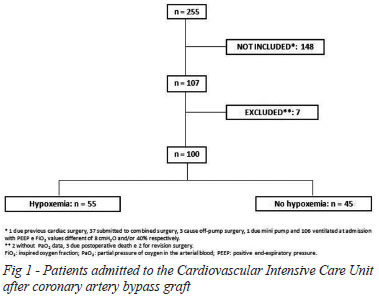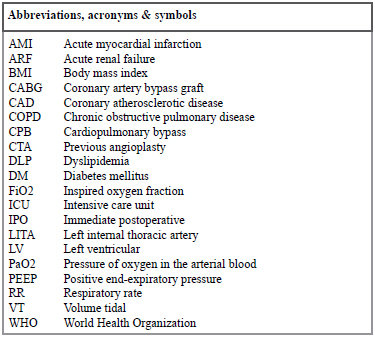INTRODUCTION: Hypoxemia is a frequent pulmonary complication in the postoperative coronary artery bypass graft. Detection of factors associated with their occurrence may indicate patients at risk for this complication, which allows tracing specific therapeutic and consequently reduce morbidity and mortality. OBJECTIVE: To identify related factors to hypoxemia occurrence in immediate coronary artery bypass graft postoperative. METHODS: In this retrospective cohort study, we studied 100 patients submitted to elective om-pump artery bypass graft , between April 2010 and December 2011, at a reference university hospital for cardiac surgery in the state of Maranhão. It was considered hypoxemia gas exchange ratio less than or equal to 300 mmHg. Associated variables with perioperative hypoxemia were defined by the Student T test, G or Mann-Whitney tests, Chi-square, or Fisher's exact test and multiple linear regression. RESULTS: Among studied variables, high body mass index (P=0.036) and smoking (P=0.024) were significantly associated with hypoxemia in the immediate coronary artery bypass graft postoperative. Hypoxemia incidence in this period was 55% and did not affects mechanical ventilation duration and Intensive Care Unit lengh of stay. CONCLUSION: In this sample, body mass index and smoking were associated to hypoxemia. These data reinforce the importance of clinical assessment to identify patients at risk for this complication, considering its high incidence in immediate postoperative period.
Oxygen level; Postoperative period; Myocardial revascularization






